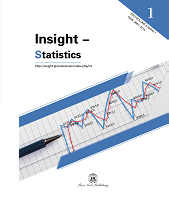Call for Papers for the Special Issue: Insight-Statistics
Trace, organic, and radioactive elements enter the environment (soil, aquifer, plant, lakes, seas, algae, and plants) via industrial, agricultural, and sanitary waste waters. Uncontaminated environment was recorded. The statistical investigation can identify the sources of pollution. The subdivision of the environment into zones based on chemical, physical, hydrological, and hydrogeological parameters achieved by selected statistical application.
The Lead Guest Editor
Mohamed Abdelfattah Elkashouty
Read more about Call for Papers for the Special Issue: Insight-Statistics


 Open Access
Open Access